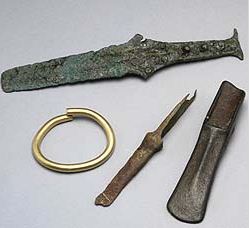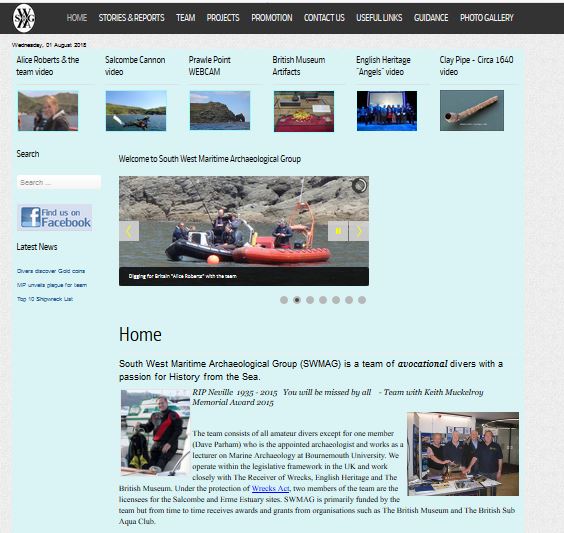Moorsands (Protected wreck site) Middle Bronze age 12th century
50 12 42N 03 44 20W with 300m exclusion zone



View of Moorsands from a drone
MoorSands site is from the middle Bronze Age (12th century BC)and is located off Prawle Point, south coast of Devon. it is in position 50 12 42N 03 44 20W and there is a 300m exclusion zone. The current licensee for the site is Neville Oldham. The site is of significant archaeological importance and consists of scattered middle Bronze Age implements about 1300 BC and suggests it was a vessel’s cargo which would make MoorSand one of the oldest shipwrecks discovered in Britain to date.
There is no evidence of any ship remains but the site indicates there was trade between Europe and the UK at the time. The adjacent image shows some of the artefacts that are in the British Museum (Photo British Museum)
The site was discovered in 1977 when two bronzes were discovered by diving instructor Philip Baker during a Youth Hostel Association diving course. Baker enlisted the help of the late Keith Muckelroy and they found another five items. Following Muckelroy’s death in 1980 work on the site was continued by Martin Dean, then of the National Maritime Museum, when a further one item was found. Much of Muckelroy’s work was published in archaeological journals.
The South West Maritime Archaeological Society (SWMAG) are licensed to dive the site and have since recovered a lot more artefacts that are now in the British museum.
The SWMAG team found 259 copper and 27 tin ingots as well as gold jewellery that had come from several sources in Europe to trade in the UK and are thought to be from around 900BC.
The site has featured on several BBC programmes including “Digging for Britain” featuring Alice Roberts and “Ancient Britain” featuring Neil Oliver

The SWMAG team with MP Sara Wollaston unveiling the Elglish Heritage plaque at gara Rock.

Neil Oliver featured the site on the BBC History of Britain program. Seen here with the site archaeologist from Bounemoth University, Dave Parham.
